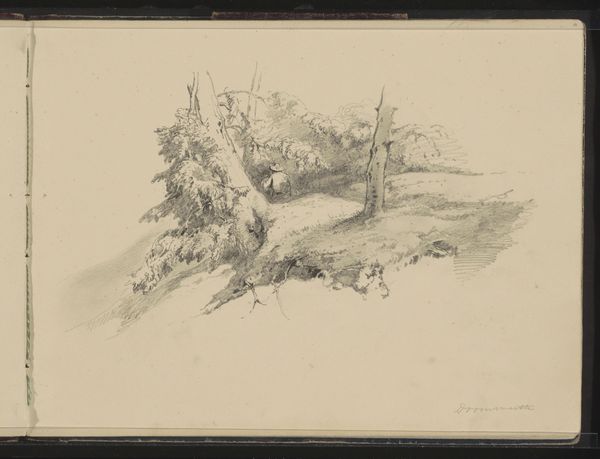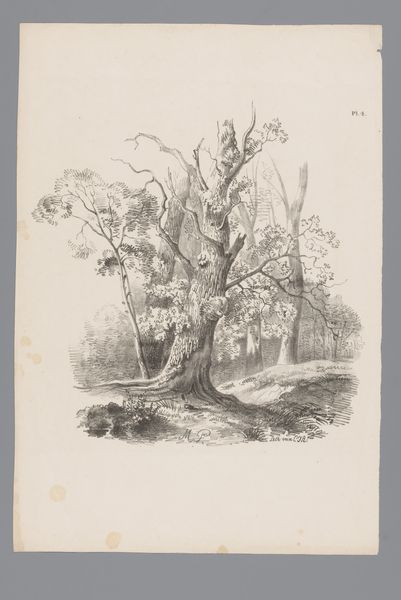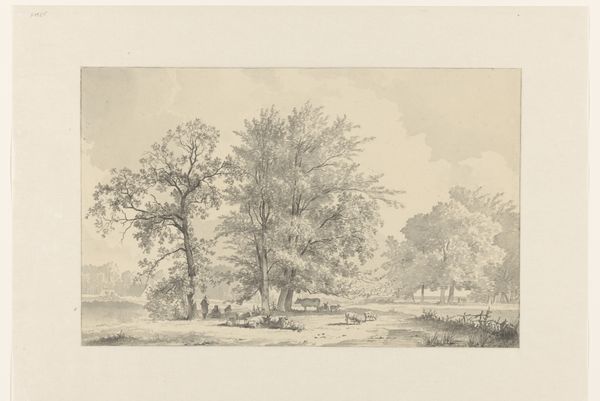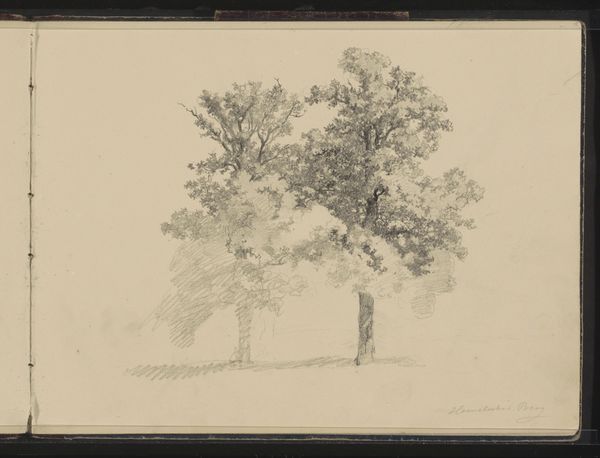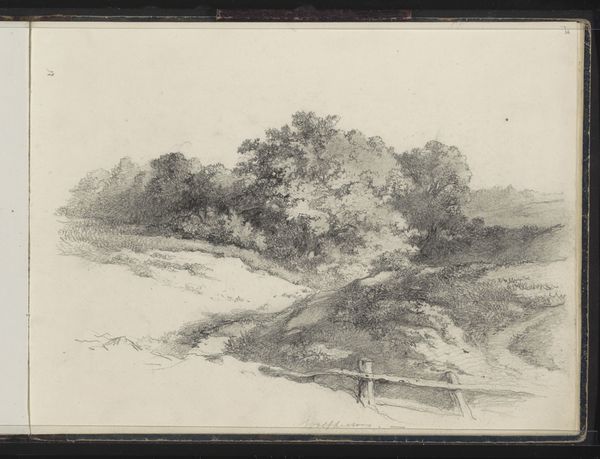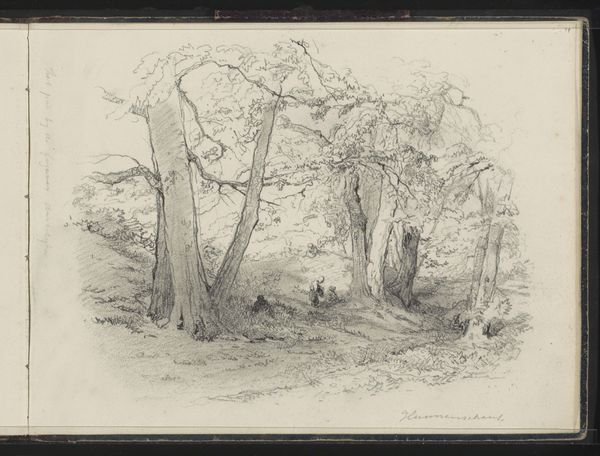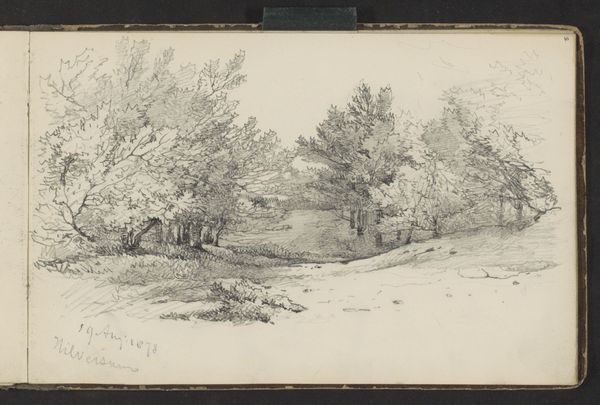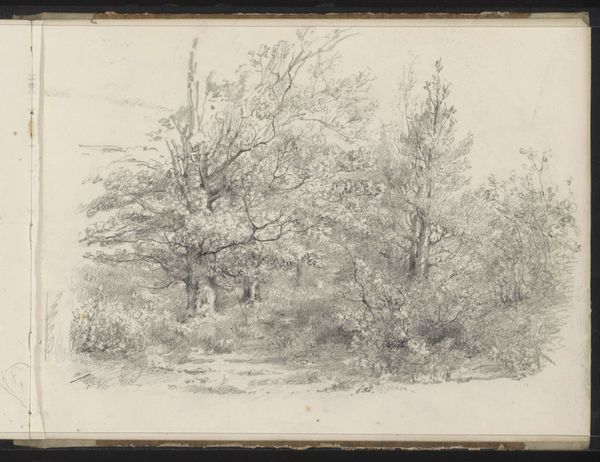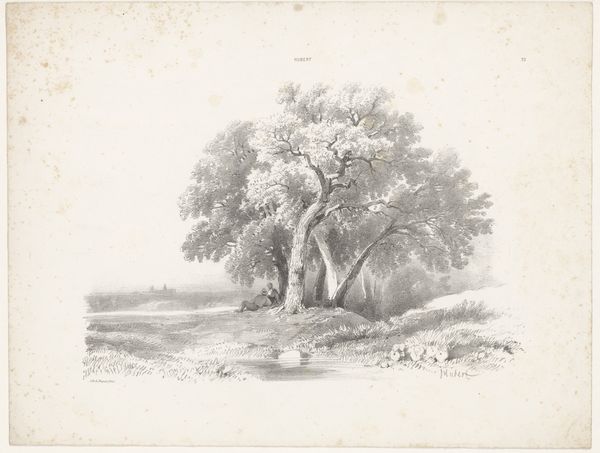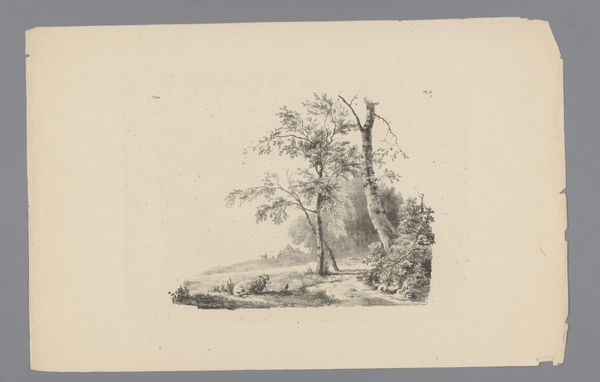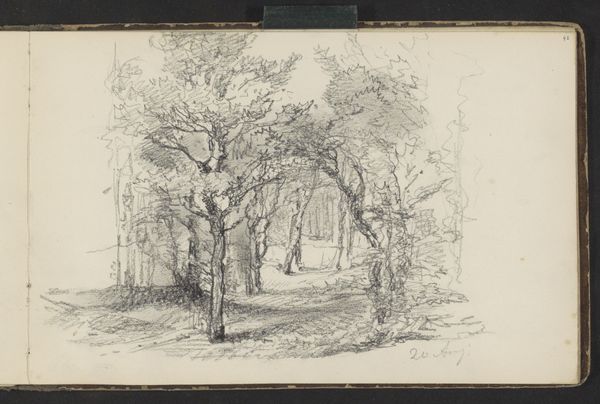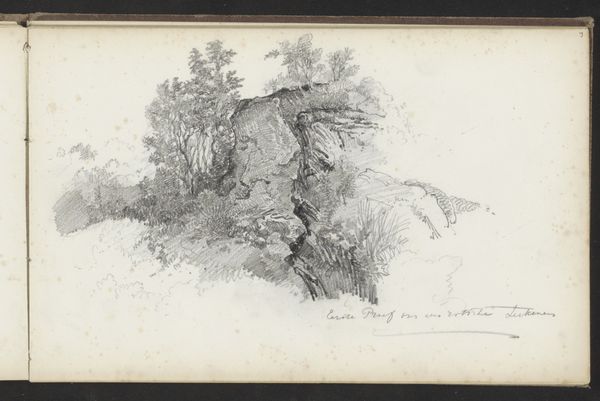
drawing, pencil
#
drawing
#
quirky sketch
#
pen sketch
#
pencil sketch
#
incomplete sketchy
#
landscape
#
personal sketchbook
#
ink drawing experimentation
#
pen-ink sketch
#
pencil
#
pen work
#
sketchbook drawing
#
sketchbook art
#
realism
Copyright: Rijks Museum: Open Domain
Curator: This is a drawing by Maria Vos, titled "Landschap te Wolfheze met bomen bij een greppel," or "Landscape at Wolfheze with trees by a ditch," dating from around 1864-1865. It’s rendered in pencil. Editor: It has a very tentative, ephemeral quality. You can almost feel the breeze moving through the trees. There's a stillness to it too. Curator: Exactly, I think this piece exemplifies the kind of art made when industrial methods for mass reproducing images were advancing rapidly; it asserts value in an individual's skilled, direct and even intimate interactions with material. Vos's handling of the pencil reveals an investment in both careful observation and recording of transient light conditions. Editor: Thinking about Vos as a woman artist at that time – she had to negotiate a patriarchal structure of art making. Did focusing on landscapes allow her a certain freedom that figure painting may not have? Were the tools she employed considered appropriate "women's work"? How might her artistic practice engage or challenge normative social roles? Curator: Interesting, to connect landscape with gender, because landscapes were very popular among all artists. But the sketchbook context is relevant here; such sketchbooks were more accepted when it came to women than formal artwork. This one is simple, yet has that feeling of craftsmanship we value and celebrate as it documents time, place, labor and resources. Editor: I find myself pondering this landscape’s socio-political backdrop. Was this a place of leisure, private land, or agricultural production? How does depicting nature serve to reinforce ideas about the relationship between the citizen and the nation, gender, and power structures? Who owned the land and what might be concealed in this seemingly straightforward depiction of rural scenery? Curator: All valid points. And the very *act* of depicting nature—the gathering of materials, the making of marks, these physical and mental processes constitute meaningful labour, right? In these marks we find what brings this work alive now. Editor: Right, by placing emphasis on process we also challenge art history that typically centered around style, connoisseurship and the genius of the artist. And, considering Vos's time and place in history makes this drawing more than a mere image. Curator: It's an artifact of human and material interactions, deeply entwined with social, economic, and historical forces. I appreciate how this enriches our viewing experience today. Editor: Agreed. This glimpse into her landscape offers us insights into the artist and the era.
Comments
No comments
Be the first to comment and join the conversation on the ultimate creative platform.
